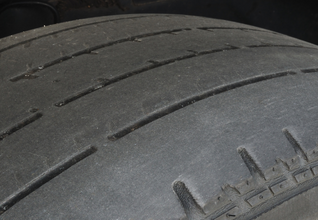
January in Ireland is marked by its unpredictable and often challenging weather conditions. The cold, damp climate, frequently accompanied by rain, sleet, and sometimes snow, presents unique challenges for drivers on the roads.
During this month, the likelihood of encountering wet or icy roads can be significantly higher, making it crucial for drivers to be acutely aware of the risks associated with these conditions, particularly the danger of vehicle skidding.
Vehicle Skidding
Skidding, a common hazard on Irish roads during the winter, occurs when a vehicle’s tyres lose traction on the road surface, leading to a loss of control. This can be a frightening experience, potentially resulting in serious accidents. Understanding the causes of vehicle skidding is essential for drivers to navigate safely through the unpredictable Irish weather.
Factors such as wet or icy conditions, which are prevalent during this time, play a significant role in increasing the risk of skidding. Additionally, other elements like the condition of the vehicle’s tyres, driving speed, braking habits, and potential mechanical issues can also contribute to this hazard.
By being informed and prepared, drivers can significantly reduce the risk of skidding and ensure safer journeys on Irish roads.
Wet or Icy Conditions

Wet or Icy conditions are the most common cause of road skidding. After rainfall, the roads are left wet. The water can then build up on the road surface, making it very difficult for the tires to grip. The same goes for icy conditions. The lack of friction can lead to tires slipping on the road. You need to take extra caution when driving in wet or icy conditions. Slow down more and increase the distance between you and the vehicle in front.
Worn or Bald Tires
Another cause of skidding is worn or bald tires. Tires that have worn treads or are worn down to the point where the treads are no longer visible are less able to grip the road. These tire conditions can make it easier for the vehicle to skid. Drivers should regularly check their tires for wear and replace them when necessary.
Speeding
Speeding on the roads is also a significant cause of skidding. When a vehicle travels at higher speeds than is legally allowed, it can be more difficult for the driver to control it. It can be particularly hazardous in wet or icy conditions. Drivers should always obey posted speed limits and reduce their speed in adverse weather conditions.

Braking
Another cause of skidding is sudden braking. When a driver brakes suddenly or harshly, the wheels can lock up, which can cause the vehicle to skid. Drivers should always brake gently and smoothly. You should avoid sudden braking whenever possible. Never break harshly in icy conditions, or you will skid off and lose control of the vehicle.
Mechanical Issue
Lastly, a mechanical problem with the vehicle’s braking system, steering system, or suspension can also cause skidding. If you notice any unusual noises or vibrations while driving, you should get your vehicle inspected by a mechanic as soon as possible.
New Technology
In newer car models, there is modern technology installed to prevent skidding from happening. Some of these features include the following:
- ABS (Anti-Lock Braking System) helps to reduce the risk of skidding, which is caused by harsh or excessive braking.
- Traction control also helps to reduce skidding caused by excessive acceleration.
Not all cars will have these features. These safety features are worth looking at if you’re in the market for a new car.
Conclusion
In conclusion, skidding can be caused by various factors, including wet or icy road conditions, worn or bald tires, speeding, sudden braking and mechanical problems. By understanding these factors and taking steps to prevent skidding, drivers can stay safe on the road and reduce the risk of accidents.
Skidding FAQs
Several factors can cause a vehicle to skid, including wet or icy road conditions, worn or bald tires, speeding, sudden braking, and mechanical issues with the vehicle.
Wet or icy conditions reduce the friction between the tires and the road surface, making it difficult for tires to grip the road, which can lead to skidding.
Tires with worn treads or those that are bald have reduced grip on the road surface, making it easier for the vehicle to skid, especially in adverse weather conditions.
Speeding increases the difficulty of controlling the vehicle and can be particularly hazardous in wet or icy conditions, leading to a higher risk of skidding.
Sudden or harsh braking can cause the wheels to lock up, leading to skidding. It’s recommended to brake gently and smoothly to avoid this.
Yes, mechanical problems with the vehicle’s braking system, steering system, or suspension can also lead to skidding.
Newer car models may include features like ABS (Anti-Lock Braking System) and traction control, which help reduce the risk of skidding caused by harsh braking or excessive acceleration.
Drivers should be aware of the factors that cause skidding, such as road conditions and vehicle maintenance, and take appropriate precautions like driving at safe speeds, maintaining their vehicle, and using smooth braking techniques.
